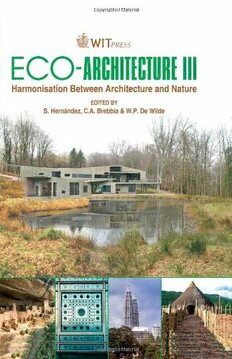
Eco-Architecture III: Harmonisation between Architecture and Nature (Wit Transactions on Ecology and the Environment) PDF
623 Pages·2010·15.259 MB·English
Most books are stored in the elastic cloud where traffic is expensive. For this reason, we have a limit on daily download.
Preview Eco-Architecture III: Harmonisation between Architecture and Nature (Wit Transactions on Ecology and the Environment)
Description:
This book contains most of the papers to be presented at the Third International Conference on Harmonisation Between Architecture and Nature, which is being held in A Coru?±a, Spain, April 12-14, 2010. Eco-Architecture ought to be in harmony with nature, including its immediate environs. Decisions have to be taken on ecological grounds concerning locations, siting and orientation, as well as the well-informed choice of materials. Eco-Architecture makes every effort to minimize the use of energy at each stage of a building's life cycle, including that embodied in the extraction and transportation of materials, their fabrication, their assembly into the building and ultimately the ease and value of their recycling when the building's life is over. The design may also take into consideration the use of energy in building maintenance and changes in its use, not to mention its lighting, heating and cooling, particularly where the energy consumed involves the emission of greenhouse gases. Substantial savings can be achieved by the choice of materials appropriate for passive energy systems, especially natural ventilation, summer shading and winter solar heat gain. Solar and wind energy can provide heating and electric power.
See more
The list of books you might like
Most books are stored in the elastic cloud where traffic is expensive. For this reason, we have a limit on daily download.
